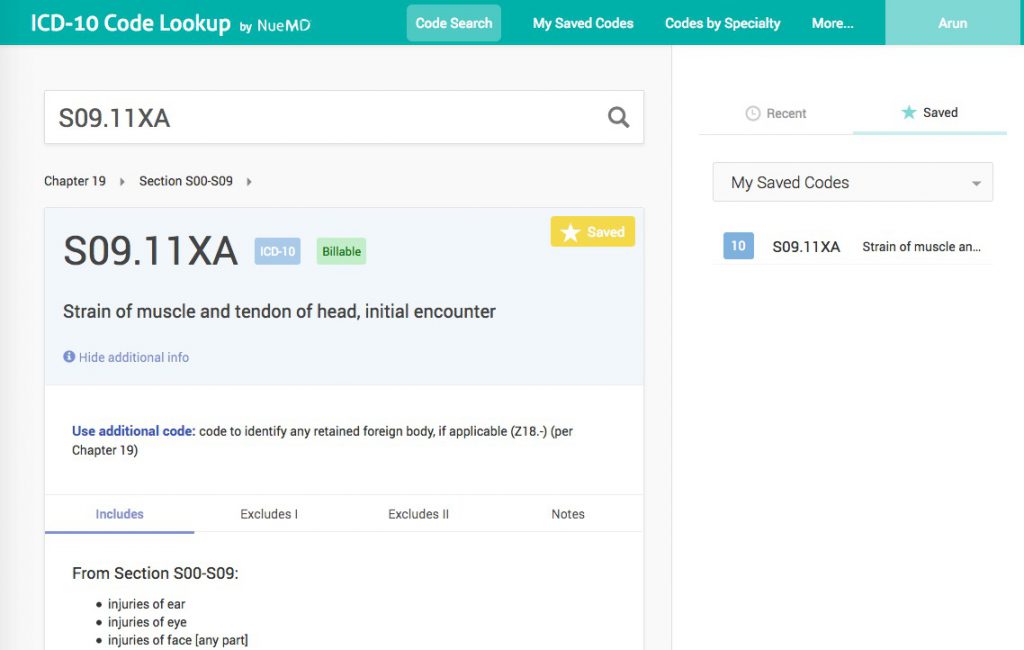If part of your workflow involves looking up ICD-10 codes, you should check out NueMD’s ICD-10 Code Lookup tool.
This might be old news if you’re in the coding business, as the website is actually ranked #1 in Google’s search results when you search “icd-10 code lookup tool.”
It’s easy to see why. NueMD’s code lookup tool sports a clean interface and modern features that are geared toward engaging and keeping users.
When you create a free account, you can save your favorite codes in your own personal categories.

Other bells and whistles that are not often featured on other web-based coding tools include training in the form of several coding games, and the ability to search for common codes by your specialty—dermatology, infectious disease, podiatry, and others.
NueMD allows you to find codes by common abbreviations and keywords, giving it clear leg up when compared with one-way code search sites such as www.icd10codesearch.com/. NueMD’s site is also less cluttered and less spammy than other tools like www.findacode.com.
The actual content about each code seems comparable to the code information provided by other services. I’m not a professional biller, but I didn’t notice any significant differences between NueMD and www.icd10data.com for the codes that I searched. However, NueMD has clearly put effort into making their tool stand out.
Conclusion
If you ever need to lookup codes online, NueMD’s app is worth a whirl. It has features and design-values that billers and other professionals in medicine should demand from their software.
Have you used NueMD’s ICD-10 code search tool? What was your experience? Do you have a different favorite tool for looking up codes? Let us know. Contact us by email or on social media.





